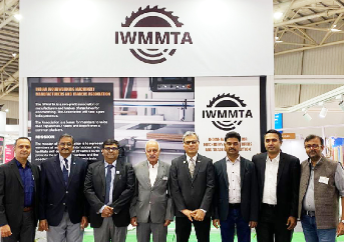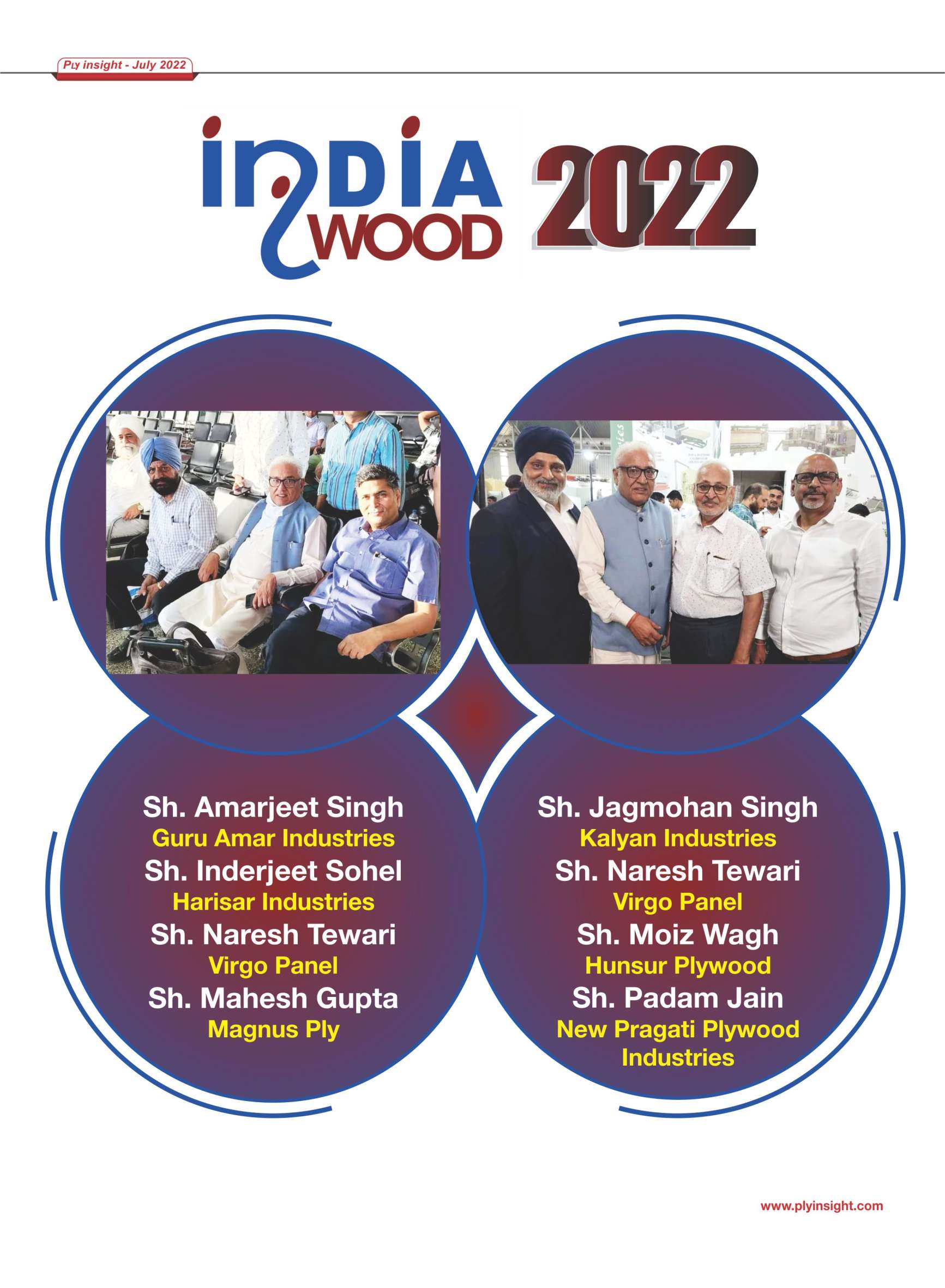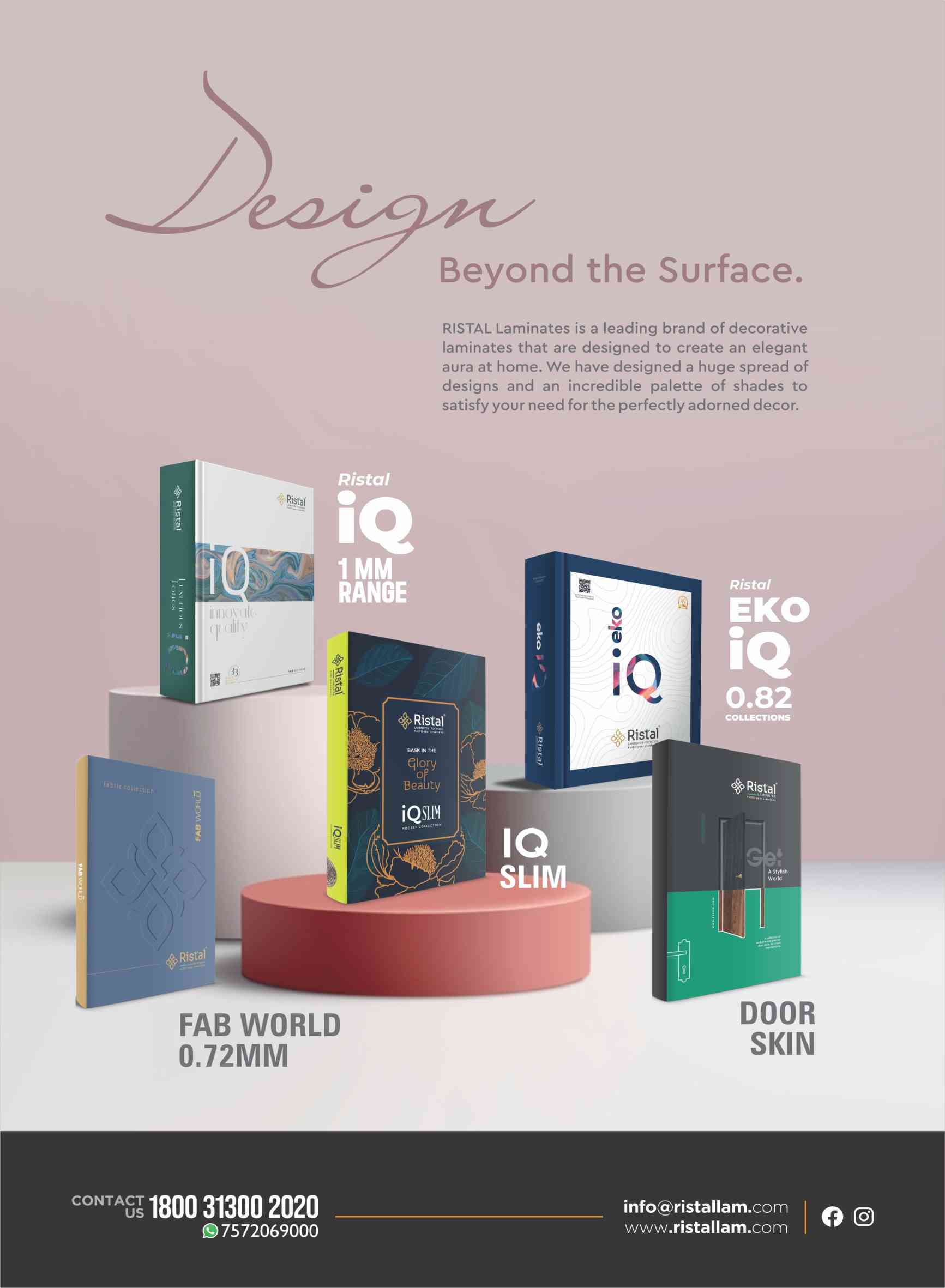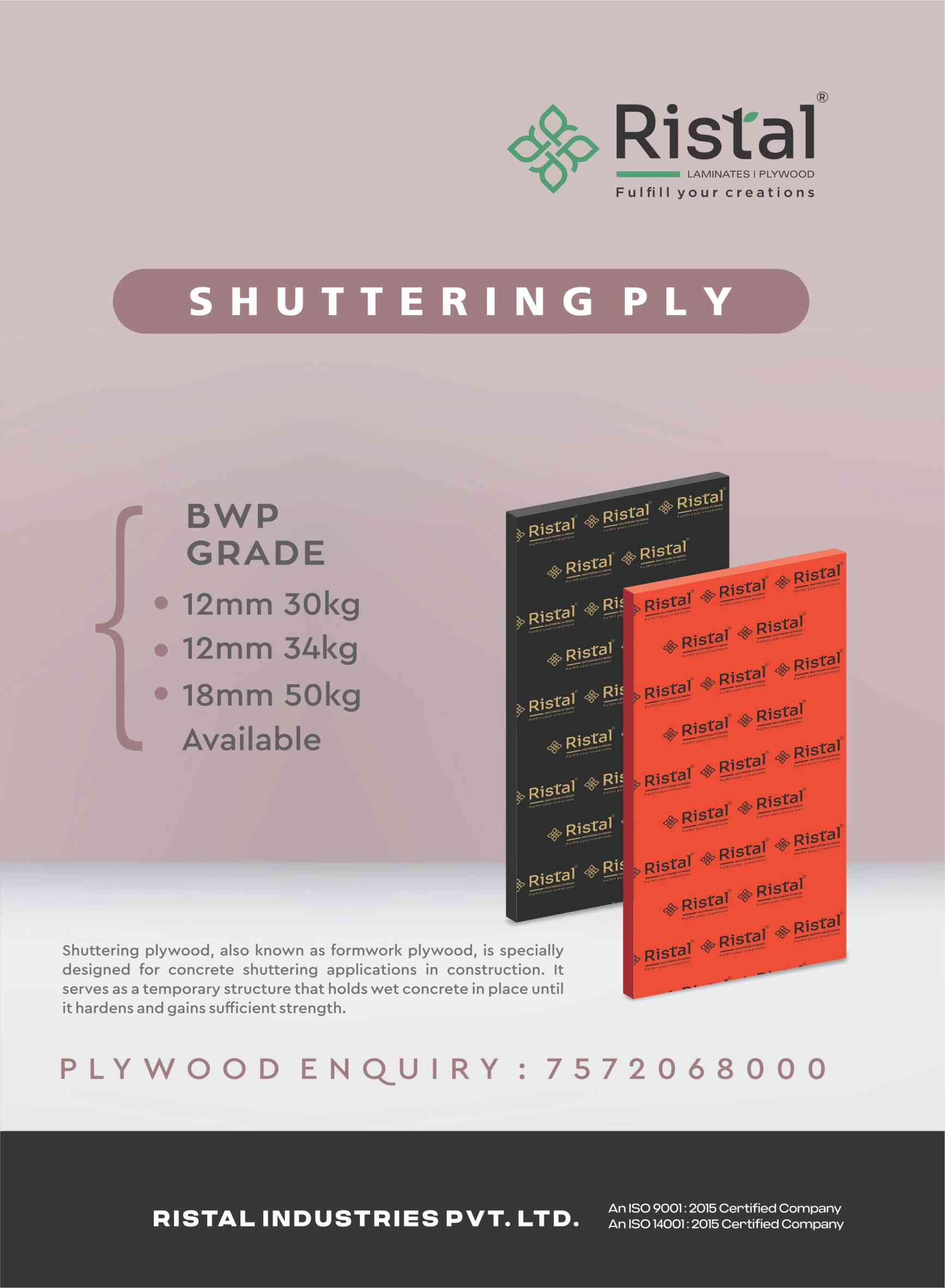Resins, Resin-Optimisation & the Glue Kitchen in Plywood Industry
- जुलाई 7, 2022
- 0
Resins, Resin-Optimisation & the Glue Kitchen in Plywood Industry
Impacts on Material Cost & Wastage Costs.
As India powers into the mid-20s of 21st century, rising against all external influences created due to various geo-political disturbances across the world, the plywood industry sector of our country is also in its growth stage. But the question remains – can we take advantage of the increasing demand for plywood and panels in the domestic as well as export sector? The answer is a complicated one.
Growth is a choice of the manufacturer. Either a manufacture can visualise the demands ahead and learn to make a good team for themselves, or they can remain in their own closed mindset. Where to place themselves in the coming years of growth, is left to manufacturers themselves.
Competition – Past & Future
Until the Covid19 pandemic struck the world and took us all like a tsunami, plywood in India used to be sold on the basis of colour, ‘Gurjan’, carpenter advice, and misleading claims. The Covid19 pandemic period gave time for many educated people to contemplate on many things in life – especially on health, vulnerability and awareness-generation in particular. This has led to many companies taking advantage of health aspects and launching anti-viral surfaces & low formaldehyde emission (LFE) plywood in the domestic market.
As requirements for consistent quality plywood from the corporate & organised sector buyers continue to rise, future competition in the plywood industry in India will gradually be intensified on the basis of quality, low formaldehyde emissions and ability to retain credibility & consistency of commitments to customers, clients, dealers and institutional buyers. Only those factories manufacturing ‘specifications-based’ plywood & panels will be able to retain buyers respectfully and consistently.
Significance of Resin-Optimisation & Glue Kitchen
So far, resin making in Indian plywood manufacturing sector has been the most ignored and secondary aspect of process standards. If one goes to the resin-making area in a plywood factory (glue kitchen), we will be shocked and taken aback by the way resin making is practiced under some of the most in-human conditions of chemical exposures and labour-work. It is high time owners accept their mis-handling and insensitive approach to resins and chemicals. People with reasonable levels of decency and senses will not be able to accept the general situation of a resin making area in our plywood and panel manufacturing plants – big or small. Factories rarely have material-handling systems, exhausts and facilitation for resin-making labour. Materials are thrown all over the place. There is no proper storage of acids, alkalis and raw materials. Workers are forced to work under extreme conditions of heat, fumes and low roof-clearances.
I personally regard any manufacturer (almost all) who disregards the function of resin-making as a person who is unethical, unhygienic, insensitive and very close to in-human. I have only one simple question to ask all the plywood manufacturers – small or big, in India – How do you maintain the kitchen in your house/residence?
Resin-Optimisation
As much as the resin-making area is ignored and given secondary attitude, so is the relevance and significance of resin-optimisation for plywood manufacturing. Resin-optimisation is the aspect of making sure that the resin is made at the least required solids content (SC) and best possible cooking, with the right kind of additives as appropriate.
For example, if a factory is able to make a top-quality resin at 42% SC, conforming to all standards and mechanical strength requirements, the factory would be saving enormous amounts of money and resources for our country. Whereas current levels of SC in resins range from 46% to 49%, a 42% standardisation of resin SC would save costs and resources in the range of 6% to 10% from current consumption levels. If a factory uses 100 MT of resins in a month, that is a whopping savings of 6 to 10 MT of resins & raw materials every month. These aspects are not given priority and relevance.
Material dis-respect is Mother Nature dis-respect. We have ‘lakshmi pooja’, ‘saraswathi pooja’, ‘bhumi pooja’, ‘ayudh pooja’, and ‘office pooja’. Why not introduce ‘samagri pooja’, to signify the importance of raw material handling and savings, during a particular day of every year?
Glue Kitchen
One of the most ignored and dis-respected areas of a plywood and panel manufacturing unit in India – Glue Kitchen. I have tried to initiate discussions on having a clean, hygienic and decent glue kitchen with few owners in India. Spontaneous reaction – you should go and see in China. They don’t give a damn to this aspect and this is how they also keep their resin area.
This confirms that we have no sense or awareness on our own, nor we want to be ourselves with self-respect and pride. On one side, be emotionally anti-China. On the other side, do whatever they do, and claim to be a China visitor every month. False emotions, false pride, false respect.
Whether our powerful, rich, and indifferent big & small factory owners agree or not –
- The glue kitchen must be the best maintained area of a factory.
- Glue kitchen must be regarded as equal to home kitchen.
- Safety and hygiene must be equally considered in both kitchens – factory & home.
- Panel-making starts from the glue kitchen – not from the peeling or crushing as considered now by the owners.
- Fast cooling (chilling plant) is the most essential equipment in a plywood/panel manufacturing factory.
- Modernising the glue kitchen alone can save 4-6% in costs, and increase production by up to 30% in current hot press lines, thus saving the need for additional hot press investments.
One thing is sure. Focusing on the glue kitchen is the primary aspect of improvement, consistency and growth for plywood and panel manufacturers in India. Any other form of growth shall remain temporary and seasonal. Jai Hind!
प्लाइवुड उद्योग में रेजिन, रेजिन-ऑप्टिमाइज़ेशन और ग्लू किचन
सामग्री लागत और अपव्यय लागत पर प्रभाव
21वीं सदी के 20 के दशक के मध्य में, दुनिया भर में विभिन्न भू-राजनीतिक गड़बड़ी के कारण उत्पन्न सभी बाहरी प्रभावों के होते हुए भी, हमारे देश का प्लाईवुड उद्योग क्षेत्र भी भारत की शक्ति के रूप में अपने विकास के चरण में है। लेकिन सवाल यह है कि क्या हम घरेलू और निर्यात क्षेत्र में प्लाईवुड और पैनल की बढ़ती मांग का फायदा उठा सकते हैं? उत्तर जटिल है।
विकास निर्माता की पसंद है। या तो एक निर्माता आगे की मांगों की कल्पना करते हुए और अपने लिए एक अच्छी टीम बनाना सीख सकता है, या वे अपनी बंद मानसिकता में रह सकते हैं। विकास के आने वाले वर्षों में खुद को कहां रखना है, यह खुद निर्माताओं पर छोड़ा जा सकता है।
प्रतियोगिता – अतीत और भविष्य
जब Covid19 महामारी ने दुनिया में प्रहार किया और हम सभी को सुनामी की तरह अपनी चपेट में ले लिया, तब तक भारत में प्लाईवुड रंग, ‘गुर्जन फेस’, बढ़ई की सलाह और भ्रामक दावों के आधार पर बेचा जाता था। कोविड-19 महामारी की अवधि ने कई शिक्षित लोगों को जीवन में कई चीजों पर चिंतन करने का समय दिया – विशेष रूप से स्वास्थ्य, भेद्यता और जागरूकता-उत्पादन पर। इसने कई कंपनियों को स्वास्थ्य पहलुओं का लाभ उठाने और घरेलू बाजार में एंटी-वायरल सतहों और कम फॉर्मलाडेहाइड उत्सर्जन (एलएफई) प्लाईवुड को लॉन्च करने के लिए प्रेरित किया है।
जैसा कि कॉर्पाेरेट और संगठित क्षेत्र के खरीदारों से लगातार गुणवत्ता वाले प्लाईवुड की आवश्यकताएं बढ़ती जा रही हैं, भारत में प्लाईवुड उद्योग में भविष्य की प्रतिस्पर्धा धीरे-धीरे गुणवत्ता, कम फॉर्मलाडेहाइड उत्सर्जन और ग्राहकों डीलर और संस्थागत खरीदार के प्रति प्रतिबद्धताओं की विश्वसनीयता और निरंतरता बनाए रखने की क्षमता के आधार पर तेज होगी। केवल ‘विनिर्देश-आधारित’ प्लाईवुड और पैनल बनाने वाली फैक्ट्रियां ही खरीदारों को सम्मानपूर्वक और लगातार बनाए रखने में सक्षम होंगी।
रेजीन – अनुकूलन और ग्लू रसोई का महत्व
अब तक, भारतीय प्लाइवुड निर्माण क्षेत्र में रेजिन बनाना प्रक्रिया मानकों का सबसे उपेक्षित और गौण पहलू रहा है। यदि कोई प्लाईवुड कारखाने (गोंद रसोई) में रेजीन बनाने वाले क्षेत्र में जाता है, और जिस तरह से रासायनिक जोखिम और श्रम-कार्य की कुछ सबसे अधिक अमानवीय स्थितियों के तहत रेजीन बनाया जाता है, उससे हम चौंक जाएंगे। अब समय आ गया है कि प्रबन्धक रेजिन और रसायनों के प्रति अपने गलत व्यवहार और असंवेदनशील दृष्टिकोण को स्वीकार करें। उचित स्तर की शालीनता और समझ वाले लोग हमारे बड़े या छोटे प्लाईवुड और पैनल निर्माण संयंत्रों में रेजीन बनाने वाले क्षेत्र की सामान्य स्थिति को स्वीकार नहीं कर पाएंगे। फैक्ट्रियों में शायद ही कभी सामग्री-हैंडलिंग सिस्टम, निकासी और रेजीन बनाने वाले श्रमिक के लिए कोई सुविध होती है। जगह-जगह सामग्री फेंकी जा रही है। अम्ल, क्षार और कच्चे माल का उचित भंडारण नहीं है। श्रमिकों को अत्यधिक गर्मी, धुएं और नीची छत के तहत काम करवाया जाता है।
मैं व्यक्तिगत रूप से किसी भी निर्माता (लगभग सभी) का सम्मान करूंगा जो अनैतिक, अस्वच्छ, असंवेदनशील और अमानवीयता के बहुत करीब रेजीन बनाने के कार्य की अवहेलना करता है। मेरे पास भारत में सभी प्लाईवुड निर्माताओं – छोटे या बड़े, से पूछने के लिए केवल एक सरल प्रश्न है – आप अपने घर/आवास में रसोई कैसे बनाए रखते हैं?
रेजीन-अनुकूलन
जितना अधिक रेजीन बनाने वाले क्षेत्र को नजरअंदाज किया जाता है और उपेक्षित रवैया दिया जाता है, उतना ही प्लाईवुड निर्माण के लिए रेजीन -अनुकूलन की प्रासंगिकता और महत्व है। रेजीन-अनुकूलन यह सुनिश्चित करने का पहलू है कि रेजीन कम से कम आवश्यक ठोस सामग्री (सोलीड़ कंटेट) और सर्वाेत्तम संभव पकाने पर बनाया गया है, जिसमें उपयुक्त प्रकार के और सही मात्रा में एडिटिव्स हैं।
उदाहरण के लिए, यदि कोई कारखाना सभी मानकों और यांत्रिक शक्ति आवश्यकताओं के अनुरूप 42 प्रतिशत Covid19 पर उच्च गुणवत्ता वाला रेजीन बनाने में सक्षम है, तो कारखाना हमारे देश के लिए भारी मात्रा में धन और संसाधनों की बचत करेगा। जबकि रेजिन में एससी का वर्तमान स्तर 46 प्रतिशत से 49 प्रतिशत तक है, रेजीन sc का 42 प्रतिशत मानकीकरण वर्तमान खपत स्तरों से 6 प्रतिशत से 10 प्रतिशत की सीमा में लागत और संसाधनों को बचाएगा। यदि कोई कारखाना एक महीने में 100 मीट्रिक टन रेजिन का उपयोग करता है, तो हर महीने 6 से 10 मीट्रिक टन रेजिन और कच्चे माल की भारी बचत होती है। इन पहलुओं को प्राथमिकता और प्रासंगिकता नहीं दी जाती है।
भौतिक अनादर माँ प्रकृति का अनादर है। हमारे पास ‘लक्ष्मी पूजा’, ‘सरस्वती पूजा’, ‘भूमि पूजा’, ‘आयुध पूजा’ और ‘कार्यालय पूजा’ है। प्रत्येक वर्ष के एक विशेष दिन के दौरान कच्चे माल की हैंडलिंग और बचत के महत्व को दर्शाने के लिए, सामग्री पूजा’ की शुरुआत क्यों नहीं की जाती?
रेजीन रसोई
भारत में एक प्लाईवुड और पैनल निर्माण इकाई के सबसे उपेक्षित और अनादरित क्षेत्रों में से एक है – ग्लू किचन। मैंने भारत में कुछ मालिकों के साथ एक साफ, स्वच्छ और सभ्य रेजीन रसोई रखने पर चर्चा शुरू करने की कोशिश की। सहज प्रतिक्रिया थी – आपको चीन जाकर देखना चाहिए। वे इस पहलू पर ध्यान नहीं देते हैं और इसी तरह वे अपने रेजीन क्षेत्र को भी रखते हैं।
यह इस बात की पुष्टि करता है कि हमारे पास अपने आप में कोई समझदारी या जागरूकता नहीं है, और न ही हम खुद को स्वाभिमान और गर्व के साथ बनना चाहते हैं। एक तरफ भावनात्मक रूप से चीन विरोधी बनें। दूसरी तरफ, हम भी वह करें जो कुछ भी वें करते हैं, और हर महीने चीन भ्रमण करने का दावा करते हैं। झूठी भावनाएँ, झूठा अभिमान, झूठा सम्मान।
हमारे शक्तिशाली, अमीर और उदासीन बड़े और छोटे कारखाने के मालिक सहमत हैं या नहीं –
- ग्लू किचन किसी कारखाने का सबसे अच्छा रखरखाव वाला क्षेत्र होना चाहिए।
- ग्लू किचन को घर के किचन के बराबर समझना चाहिए।
- कारखाने और घर दोनों रसोई में सुरक्षा और स्वच्छता पर समान रूप से विचार किया जाना चाहिए।
- पैनल बनाना ग्लू किचन से शुरू होता है – पीलींग या (क्रसींग) कुचलने से नहीं जैसा कि अब भी मालिकों द्वारा माना जाता है।
- प्लाइवुड/पैनल निर्माण कारखाने में फास्ट कूलिंग (चिलिंग प्लांट) सबसे आवश्यक उपकरण है।
- अकेले ग्लू किचन का आधुनिकीकरण करने से लागत में 4-6 प्रतिशत की बचत हो सकती है, और वर्तमान हॉट प्रेस लाइनों में उत्पादन में 30 प्रतिशत तक की वृद्धि हो सकती है, इस प्रकार अतिरिक्त हॉट प्रेस निवेश की आवश्यकता को बचाया जा सकता है।
एक बात पक्की है। ग्लू किचन पर ध्यान केंद्रित करना भारत में प्लाईवुड और पैनल निर्माताओं के लिए सुधार, निरंतरता और विकास का प्राथमिक पहलू है। विकास का कोई अन्य रूप अस्थायी और मौसमी रहेगा। जय हिन्द!
































































